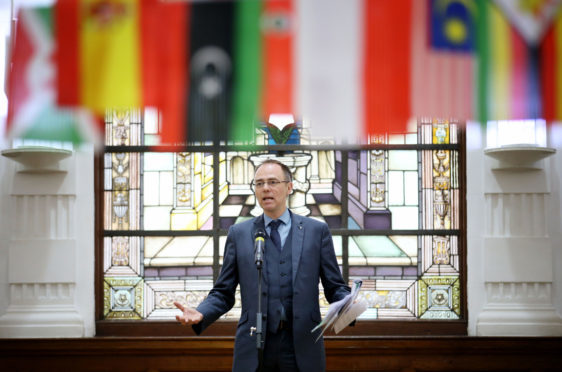Scotland will need to find alternatives to immigration to boost population, according to a report from independent experts.
The Migration Advisory Committee was commissioned by the UK Government to provide an evidence base for a new immigration system for the UK after full Brexit in 2021.
Now committee chairman Alan Manning has published a long-awaited interim report containing the evidence the committee has gathered so far.
Prof Manning said he recognised Scotland had a particular issue with population decline and acknowledged immigration could alleviate the problem of an aging population.
Nonetheless, he said alternatives to immigration must be considered.
He said: “Migration is rarely the only policy available to deal with a problem and always needs to be compared with alternatives.
“Policies to raise the pension age are much more effective as long as older workers remain in employment.
“Remote areas, mostly in Scotland, face the prospect of population decline but this might be better addressed by policies to address why people leave rather than drawing people in.”
The Scottish Government Europe Minister, Alasdair Allan, said the evidence pointed to a need for a Scotland-specific immigration policy.
He said: “The evidence is clear. The UK Government’s position on migration does not work for Scotland’s needs and that is why the Scottish Parliament has recently joined the Scottish Government in calling for new powers to enable a Scotland-specific policy.
“There is a growing consensus that this is the right way forward for Scotland, and the Scottish Government is seeking to build on that.
“As set out in our discussion paper ‘Scotland’s Population Needs and Migration Policy’, lower migration levels have the potential to cause up to £10 billion of damage to Scotland’s economy per year by 2040.
“It is vital we are able to set a tailored approach to migration to avoid the harmful economic, social and cultural consequences falling migration could cause.”
Mr Allan added the evidence in Professor Manning’s report backed that conclusion.
“The findings from this report are clear,” he said.
“Lower migration is very likely to lead to lower growth in total employment and lower output growth and a substantial majority of employers in Scotland remain concerned around future access to the European Economic Area labour market.
“The report also recognises population growth varies across the UK and acknowledges our argument Scotland has a greater reliance on international migration for future population growth and to support our rural and island communities.”
